Current Affairs 16 Sep 2023
Today’s News
Goods Trade Deficit Hits a 10 Month High
(Current Affairs 16 Sep 2023 | Relevant for GS Paper-3)
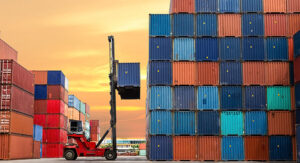
- India’s foreign trade hit a fresh trough in August, with goods exports shrinking for the seventh successive month, services exports estimated to have dropped for the first time in well over a year, and the goods trade deficit hitting a 10 month high.
- The extent of decline in outbound shipments eased to 6.86% in August from doubledigit contractions in recent months, to hit a three month high worth $34.5 billion.
- Services exports, after growing at a sharp 26.7% rate in 2022-23, were reckoned to have shrunk 0.4% in August to $26.39 billion, stoking fears about a widening current account deficit in this quarter.
- The merchandise import bill for August dropped 5.23% year on year to $58.64 billion, but was 10.85% higher than July’s $52.9 billion import tally, lifting the goods trade deficit for August to $24.16billion, just 2.8% below August 2022 numbers and almost 17% over July’s $20.67 billion gap.
Refresh basics
Trade deficit:
- A trade deficit is an amount by which the cost of a country’s imports exceeds its exports.
- It’s one way of measuring international trade, and it’s also called a negative balance of trade.
- A trade deficit can be calculated by subtracting the total value of a country’s exports from the total value of its imports.
Cause of trade deficit
- It can be hard to pinpoint the exact cause of a trade deficit. Typically, multiple factors are at play. Here are some of the leading causes of an increase in a country’s trade deficit.
- Economic growth: A large trade deficit can indicate economic growth. When the economy of a country grows and strengthens, consumers have more wealth to purchase goods from overseas, which will increase the trade deficit. A strong economy also attracts foreign investors, further enlarging the trade deficit.
- Increased government spending: An increase in government spending can mean a country’s savings diminish, increasing the trade deficit.
- Changes in the exchange rate: A change in the strength of a country’s currency can impact the trade deficit. When a country’s currency weakens relative to other nations, trade between other countries becomes more costly. If a country’s currency is strong, it may want to import more goods or services.
- Limits of production: Certain goods simply cannot be produced domestically, or are much cheaper to produce abroad due to climate, natural resources, or other reasons. For example, a small island nation may rely on imports of agricultural products from the mainland.
- Removal of barriers to trade, such as tariffs: Trade policy can affect the trade deficit, but unless the country was previously closed to trade, trade policy mostly serves to shift the trade deficit toward another trading partner, rather than creating or increasing the overall trade deficit.
A GM Crop Decision that Cuts the Mustard
(Current Affairs 16 Sep 2023 |Relevant for GS Paper-3)

- The adoption of science based technologies for crop improvement such as genetic engineering for developing genetically modified (GM) crops as a supplement to conventional breeding methods has become an absolute necessity to address the burgeoning and complex challenge of achieving global food and nutritional security under the fast changing climate.
- According to the global Food Security and Nutrition Report, 2019, it is difficult to achieve the ‘Zero Hunger’(triumph article ) target by 2030.
- The emphasis needs to be on accelerating the pace of improving crops genetically. In order to increase food production and become self reliant, we require superior crop varieties and hybrids that provide enhanced yields and wide adaptability across environments, and require fewer inputs of natural resources.
- The advent of the Green Revolution in the 1960s70s resulted in enhanced food production from a mere 50 million tonnes in 195051 to over 300 million tonnes in 2020-21.
- Genetic modification of crops using the available and vast genetic diversity in conjunction with traditional farming has been well documented for increased productivity, contributing to global food, feed, and fibre security.
- According to a report by the International Service for the Acquisition of Agri bio -tech Applications (ISAAA) 2020, a total of 72 countries have adopted GM crops either as human food or animal feed, as well as for commercial cultivation (56% of the global GM crop area is in developing countries compared to 44% in industrial countries).
- GM crops have benefited more than 1.95 billion people in five countries (Argentina, Brazil, Canada, India and the United States) or 26% of the current world population of 7.6 billion.
- Globally, genetic modification has expanded its reach, beyond the major four crops, maize, soybean, cotton and canola, to other economically important food crops for various traits such as insect and herbicide resistance, climate resilience and nutritional quality improvement.
- Global economic gains contributed by GM crops (triumph article)(19962018) have amounted to $224.9 billion in economic benefits to more than 16 million farmers, 95% of whom are from developing countries.
- India faces a major deficit in edible oils, with 60% of its demand being met by imports. Mustard is one of the most important edible oil crops in India; however, its per hectare yield is very low when compared to the global average.
Using genetic engineering, extensive research has been carried out at the Centre for Genetic Manipulation of Crop Plants (CGMCP), University of Delhi South Campus, to create a GM mustard hybrid, DMH11 with higher vigour and yield — this will facilitate an increase in domestic production of edible oils as well as enhanced farm incomes.
- The GM mustard hybrid is based on the barnase/barstar system, which works on the principle of removing male fertility in one parent and restoring it in the offspring.
- On October 25, 2022, the Genetic Engineering Appraisal Committee (GEAC) of the Ministry of Environment, Forest and Climate Change Government of India, made a landmark decision of approving the release of DMH11 and its parental line for cultivation.
- This will help boost the vibrant genetic engineering research sector in the country and enable the generation of new crop varieties with improved traits.
- As the mustard varieties in India have a very narrow genetic base, the decision by GEAC to allow barnase barstar based hybrid production in mustard paves the way for the breeding of mustard hybrids not only for higher yields but also to ensure resistance to diseases and improve oil quality.
- As the mustard varieties in India have a very narrow genetic base, the decision by GEAC to allow barnase barstar based hybrid production in mustard paves the way for the breeding of mustard hybrids not only for higher yields but also to ensure resistance to diseases and improve oil quality.
- The environmental release of DMH11 marks the beginning of a new era in self-reliance and sustainability in agriculture. More improved GM food crops are needed to boost the profitability of Indian farmers.
Jal Jeevan Mission Remains a Pipe Dream
(Current Affairs 16 Sep 2023 |Relevant for GS Paper-2)
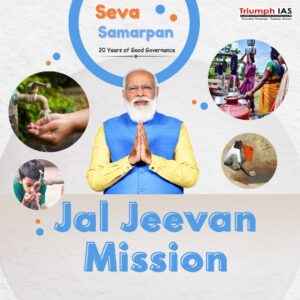
On Independence Day, 2019, the water starved Mahoba district in south eastern Uttar Pradesh reported only 1,612 households with tap connections.
Four years later, 1,29,209 households — or about 98% of all rural homes in the district — have water connections, according to the public dashboard of the Jal Jeevan Mission (JJM), the Centre’s ₹3.6 lakh crore scheme that aims to provide piped water to every village home by 2024.
No other district in India has reported such a dramatic increase in tap connections.
Even in villages officially certified as having 100% coverage of functional household tap connections (FHTC), many households do not actually have taps. Some do have taps, but are not getting any water through them; even in the best case scenario, such households get no more than two hours of water.
According to the scheme’s definitions, an FHTC household is one where at least 55 litres of potable water per person a day is made available to every household.
Some examples
- Charkhari (one of four blocks in the district) has 48 villages with 24,037 households, each of which has been marked as having a tap connection.
- Residents of Asthaun, a village with 420 households, gripe that only half the households have taps and no water actually flows through them.
- Noting that half the village is in a low lying area, resident Sunil Tiwari says that without a submersible pump, which “only the rich could afford”, water simply did not make it to most houses.
- In Luhari village, whose 295 houses have all been marked as having ‘tap connections’
- In the Kunata village of the adjoining Panwari block as well, all 185 households have been marked as having a household tap connection.
Refresh basics
Jal Jeevan Mission (JJM)
- Jal Jeevan Mission (JJM) is a flagship programme of the Government of India launched in 2019 intending to provide Functional Household Tap Connection (FHTC) to every rural household by 2024.
- The mission is based on the principle of community ownership and management of water resources and infrastructure.
Features
Demand-driven and Decentralized programme
- JJM is a demand-driven and decentralized programme that empowers Gram Panchayats and their sub-committees, such as Village Water and Sanitation Committees (VWSCs) or Paani Samitis, to plan, implement, operate and maintain their water supply systems.
-
- They are supported by the District Water and Sanitation Missions (DWSMs) and the State Water and Sanitation Missions (SWSMs) in terms of technical guidance, fund allocation and monitoring. The National Jal Jeevan Mission (NJJM) provides overall policy direction, coordination and oversight.
- This bottom-up approach ensures that the water supply solutions are context-specific, sustainable and responsive to the needs and preferences of the users.
Focuses on service delivery
- JJM focuses on service delivery rather than mere infrastructure creation. It aims to provide 55 litres per capita per day (lpcd) of potable water to every rural household through FHTCs, as well as water for public institutions like schools, anganwadis, health centres, etc.
- The service delivery standards are defined in terms of quantity, quality, regularity and affordability of water supply. The users are expected to pay a nominal user fee for the O&M of the water supply systems.
- The VWSCs or Paani Samitis are responsible for ensuring that the service delivery standards are met and grievances are redressed.
Source sustainability and greywater management
- JJM integrates source sustainability and greywater management as essential components of water supply. It promotes groundwater recharge through point recharge sources, rainwater harvesting, afforestation, de-silting of minor irrigation tanks, rejuvenation of water bodies, etc. It also encourages basic treatment and re-use of greywater for agriculture and other purposes.
- These measures help in augmenting the availability of water, reducing the stress on groundwater resources and preventing environmental degradation.
Utilizing technologies for ensuring water quality
- JJM harnesses evolving technologies for water quality monitoring and surveillance, operation and maintenance, treatment, etc. It also geo-tags the assets created under the mission for better accountability and transparency. For instance, JJM uses sensor-based devices to measure the flow and quality of water at various points in the water supply chain.
- It uses mobile applications to capture real-time data on FHTC coverage, functionality status, user feedback, etc. These technologies enable data-driven decision-making and performance assessment at all levels.
Flexible and increased financing to the states and UTs
- JJM provides flexible and increased financing to the states and UTs through a combination of central and state funds, convergence with other schemes like MGNREGA, SBM 2.0, etc., and community contribution of 5% or 10% of the capital expenditure depending on the category of the village.
- The fund-sharing pattern between the centre and the states/UTs is;
-
- 90:10 for Himalayan and North-Eastern states/UTs
- 50:50 for other states/UTs
- 100:0 for UTs without legislature
- 100:0 for aspirational districts
- Fund utilization is linked to the achievement of physical and financial milestones and adherence to the JJM guidelines.
Capacity building and technical assistance
- JJM supports capacity building and technical assistance at all levels, from national to village level, through various institutions and platforms like National Jal Jeevan Mission (NJJM), State Water and Sanitation Missions (SWSMs), District Water and Sanitation Missions (DWSMs), Jal Shakti Kendras (JSKs), etc.
- These institutions provide training, handholding, mentoring, knowledge sharing, innovation promotion, etc. to the stakeholders involved in the implementation of JJM. They also facilitate cross-learning and best practice dissemination among the states/UTs and the Gram Panchayats.
Army Deploys Drones, Sets off Blasts in Operation to Nab Hiding Militants in Anantnag
(Current Affairs 16 Sep 2023 |Relevant for Prelims)

- Security forces used explosions and opened heavy fire on the hill crevices, seen as potential hideouts of militants, and suspected spots in Gadool hill on the third day of the Anantnag operation in Kokernag area.
- The Army used quad copters and drones to trace the missing soldier and establish positions of the militants.
Refresh Basics
Drones
- About Drones
- It is a layman terminology for Unmanned Aircraft (UA).
- Originally developed for the military and aerospace industries, drones have found their way into the mainstream because of the enhanced levels of safety and efficiency they bring.
- A drone’s autonomy level can range from remotely piloted (a human controls its movements) to advanced autonomy, which means that it relies on a system of sensors and LIDAR detectors to calculate its movement.
- Use of drones
- Defence: Drone system can be used as a symmetric weapon against terrorist attacks.
- Drones can be integrated into the national airspace system.
- Deployment of drones for combat, communication in remote areas, counter-drone solutions can be done.
- Healthcare Delivery Purposes: Recently, the Ministry of Civil Aviation has approved a project with the Telangana government for using drone technology to deliver vaccines in remote areas.
- Agriculture: In the agriculture sector, micronutrients can be spread with the help of drones.
- It can also be used for performing surveys for identifying the challenges faced by the farmers.
- Monitoring: The drone technology in the SVAMITVA scheme launched by the Government of India, within less than a year, has helped about half a million village residents to get their property cards by mapping out the abadi areas.
- Drones can be used for real-time surveillance of assets and transmission lines, theft prevention, visual inspection/maintenance, construction planning and management, etc
- They can be used for anti-poaching actions, monitoring of forests and wildlife, pollution assessment, and evidence gathering.
- Law Enforcement: Drones are also significant for the law enforcement agencies, the fire and emergency services wherever human intervention is not safe and the healthcare services.
Bhoj Wetland
(Current Affairs 16 Sep 2023 |Relevant for Prelims)
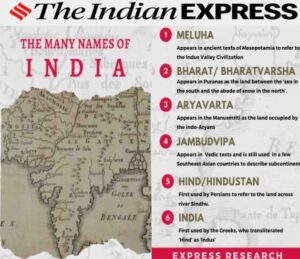
- The National Green Tribunal (NGT) recently ordered the MP state govt to stop the operation of cruise vessels as well as other motor-propelled boats in the Bhoj wetland on account of the drastic damage being done to water bodies.
- The Bhoj Wetland, also known as Bhopal Lake is a designated Ramsar site and hence, a wetland of international importance (Ramsar Convention 1971).
- It consists of two contiguous human-made reservoirs –
- “Upper Lake” – created in the 11th century by construction of an earthen dam across the Kolans River.
- “Lower Lake” – constructed ~200 years ago, largely from leakage from the Upper Lake. It is surrounded by the city of Bhopal.
To master these intricacies and fare well in the Sociology Optional Syllabus, aspiring sociologists might benefit from guidance by the Best Sociology Optional Teacher and participation in the Best Sociology Optional Coaching. These avenues provide comprehensive assistance, ensuring a solid understanding of sociology’s diverse methodologies and techniques.
Current affairs 16 September 2023, Today news, Today news GS, Today news upsc, Today news and views, Today news 2023, Today news Current affairs September 2023, Current affairs news, Current affairs book pdf, Current affairs best blog, Current affairs for UPSC, Current affairs 2023, Current affairs contact, Current affairs book, Current affairs program meaning

Choose The Best Sociology Optional Teacher for IAS Preparation?
At the beginning of the journey for Civil Services Examination preparation, many students face a pivotal decision – selecting their optional subject. Questions such as “which optional subject is the best?” and “which optional subject is the most scoring?” frequently come to mind. Choosing the right optional subject, like choosing the best sociology optional teacher, is a subjective yet vital step that requires a thoughtful decision based on facts. A misstep in this crucial decision can indeed prove disastrous.
Ever since the exam pattern was revamped in 2013, the UPSC has eliminated the need for a second optional subject. Now, candidates have to choose only one optional subject for the UPSC Mains, which has two papers of 250 marks each. One of the compelling choices for many has been the sociology optional. However, it’s strongly advised to decide on your optional subject for mains well ahead of time to get sufficient time to complete the syllabus. After all, most students score similarly in General Studies Papers; it’s the score in the optional subject & essay that contributes significantly to the final selection.
“A sound strategy does not rely solely on the popular
Opinion of toppers or famous YouTubers cum teachers.”
It requires understanding one’s ability, interest, and the relevance of the subject, not just for the exam but also for life in general. Hence, when selecting the best sociology teacher, one must consider the usefulness of sociology optional coaching in General Studies, Essay, and Personality Test.
The choice of the optional subject should be based on objective criteria, such as the nature, scope, and size of the syllabus, uniformity and stability in the question pattern, relevance of the syllabic content in daily life in society, and the availability of study material and guidance. For example, choosing the best sociology optional coaching can ensure access to top-quality study materials and experienced teachers. Always remember, the approach of the UPSC optional subject differs from your academic studies of subjects. Therefore, before settling for sociology optional, you need to analyze the syllabus, previous years’ pattern, subject requirements (be it ideal, visionary, numerical, conceptual theoretical), and your comfort level with the subject.
This decision marks a critical point in your UPSC – CSE journey, potentially determining your success in a career in IAS/Civil Services. Therefore, it’s crucial to choose wisely, whether it’s the optional subject or the best sociology optional teacher. Always base your decision on accurate facts, and never let your emotional biases guide your choices. After all, the search for the best sociology optional coaching is about finding the perfect fit for your unique academic needs and aspirations.
To master these intricacies and fare well in the Sociology Optional Syllabus, aspiring sociologists might benefit from guidance by the Best Sociology Optional Teacher and participation in the Best Sociology Optional Coaching. These avenues provide comprehensive assistance, ensuring a solid understanding of sociology’s diverse methodologies and techniques. Sociology, Social theory, Best Sociology Optional Teacher, Best Sociology Optional Coaching, Sociology Optional Syllabus.
Best Sociology Optional Teacher, Sociology Syllabus, Sociology Optional, Sociology Optional Coaching, Best Sociology Optional Coaching, Best Sociology Teacher, Sociology Course, Sociology Teacher, Sociology Foundation, Sociology Foundation Course, Sociology Optional UPSC, Sociology for IAS,
Follow us :
🔎 https://www.instagram.com/triumphias
🔎https://www.youtube.com/c/TriumphIAS
https://t.me/VikashRanjanSociology
Find More Blogs
|
Scope of the subject and comparison with other social sciences |
|||
|
|
|
|
Modernity and social changes in Europe |




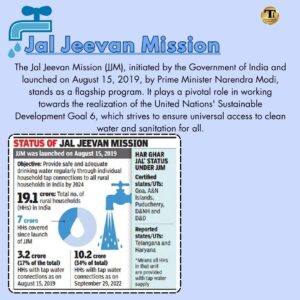
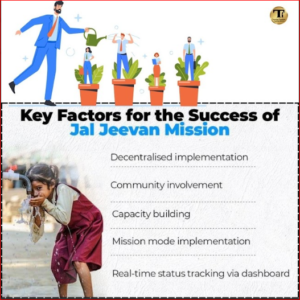
One comment